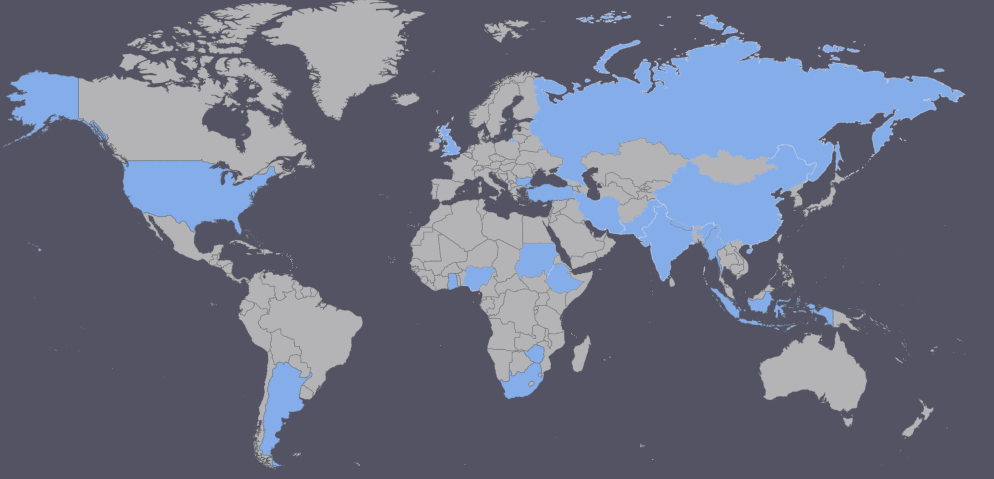Prediction of SO2 Concentration Using Air Dispersion Model: A Case Study of Thermal Power Plant
Keywords:
Air pollution, Dispersion models, Power plant, Plume rise, Meteorological parametersAbstract
The air pollution has assumed greater and alarming proportion in urban , industrial & pockets where cluster of air polluting industries are in existence .Various air pollutants, namely, Carbon Monoxide (CO), Sulphur Dioxide (SO2), Oxides of Nitrogen (NOx), Suspended Particulate Matter, Respirable Suspended Particulate Matter (PM10, PM2.5, PM1.0), Hydrogen Sulphide (H2S), Methane, Hydrocarbons (HC), Benzene, Aldehydes, 1-3 Butadiene, PAH, Mercaptans, Carbon Disulphide (CS2) , Fluorine based gases and so on so forth are emitted out from these sources. These pollutants are caused on account of vehicular emissions, industrial, Mining, Commercial and Household fuel burning. These pollutants when released in the atmosphere are subjected to transportation, dispersion, transformation, fall out, wash out and finally reach the ground level at a particular distance. Emissions from stacks are subjected to plume rise which again is dependent on force of buoyancy and momentum. The higher is the plume rise, the lesser will be Ground level Concentration. The relationship between the source of emissions and its magnitude with the ground level concentrations at different receptor points is governed by air dispersion models which takes into account the source strength, plume rise, Atmospheric Stability, mixing height, wind velocity, terrain and other meteorological conditions. Various air dispersion models have been developed world over for different applications under different scenarios. Applications of such models have been made mandatory within the framework of Environmental Impact Assessment (EIA) notification, 1994, as amended from time to time. It has therefore assumed greater importance for the academicians, consultants and regulatory authorities. An attempt has been made in the present paper by the authors to discuss such models with a view to select a particular model that can be used for a particular area or application. An effort has also been made to predict SO2 concentrations from a coal based thermal power plant at various receptor points using model of Gaussian dispersion.
References
Bhargava, A., Patel, P., 2016. Air Dispersion Models for Different Applications - Special Reference to Thermal Power Plant. International Journal of Scientific Development and Research 1 (3), 121-124.
Bluett, J., Gimson, N., Fisher, G., Heydenrych, C., Freeman, T., Godfrey, J., 2004. Good Practice Guide for Atmospheric Dispersion Modelling. Ministry for the Environment Manatu Mo Te Taiao PO Box 10-362, Wellington, New Zealand.
Bosanquet, C.H., Pearson, J.L., 1936. The Spread of Smoke and Gases from Chimneys. Transactions of the Faraday Society 32, 1249-1263.
Hurley, P., 2002. The Air Pollution Model (TAPM) Version 2: User Manual. CSIRO Atmospheric Research Internal Paper No: 25, CSIRO, Melbourne.
Magill, P.L., Holden, F.R., Acklay, C., 1956. Air Pollution Handbook. McGraw-Hill Book Co., Inc., New York, USA.
Pasquill, F., 1962. Atmospheric Diffusion. D. Van Nostrand Company Inc. 120 Alexander Street, Princeton, New Jersey.
Pelliccionia, A., Tirabassib, T., 2006. Air dispersion model and neural network: A new perspective for integrated models in the simulation of complex situations. Environmental Modelling & Software 21 (4), 539-546.
Perkins, H.C., 1974. Air Pollution. McGraw-Hill Kogakusha Ltd., Tokyo, Japan.
Perry, S.G., Burns, D.J., Cimorelli, A.J., 1989. User’s Guide to the Complex Terrain Dispersion Model Plus Algorithms for Unstable Situations (CTDMPLUS). US Environmental Protection Agency: North Carolina, USA.
Ross, D.G., 2001. International Clean Air Conference: Modelling Workshop Report. Clean Air 35 (3), 26-27.
Shaw, R.W., Munn, R.E., 1971. Air Pollution Meteorology. In: McCormac B. (eds) Introduction to the Scientific Study of Atmospheric Pollution. Springer, D. Reidel Publishing Company, Dordrecht, Holland.
Stern, A.C., 1968. Air Pollution and Its Effects. 2nd Edition, Academic Press, New York, USA.
Strauss, W., 1978. Air Pollution Control, Part 3, Measuring and Monitoring Air Pollutants. Wiley Interscience, New York, USA.
Sutton, O. G., 1947. The Problem of Diffusion in the Lower Atmosphere. Quarterly Journal of the Royal Meteorological Society 73, 257-276.
Turner, D.B., 1994. Workbook of Atmospheric Dispersion Estimates: An Introduction to Dispersion Modeling. 2nd Edition, Lewis Publishers, CRC Press Company, Washington, D.C., USA.
Wark, K., Warner, C.F., 1981. Air Pollution Its Origin and Control. 2nd Edition, Harper and Row Publishers, New York, USA.
Downloads
Published
Issue
Section
License
Copyright (c) 2020 Akshey Bhargava, Swati Bhargava, Prachi Golhar, Sheetal Kamble, Priyanka Boddu, Preeti Pandey

This work is licensed under a Creative Commons Attribution-NonCommercial-NoDerivatives 4.0 International License.
The authors keep the copyrights of the published materials with them, but the authors are aggee to give an exclusive license to the publisher that transfers all publishing and commercial exploitation rights to the publisher. The puslisher then shares the content published in this journal under CC BY-NC-ND license.



